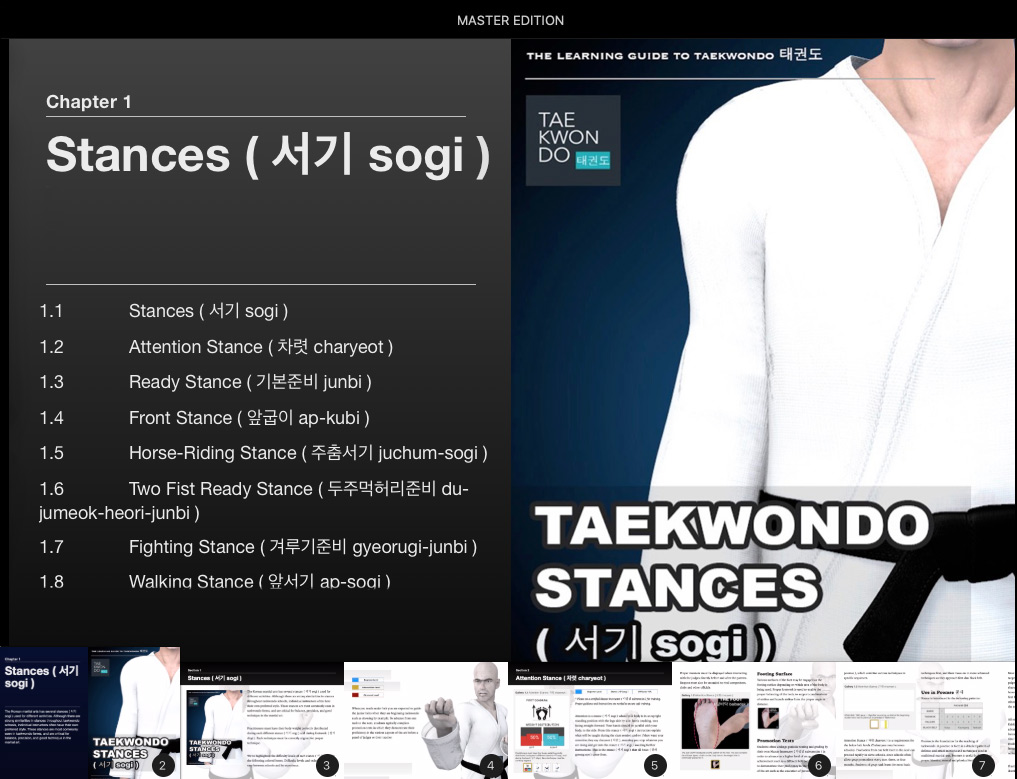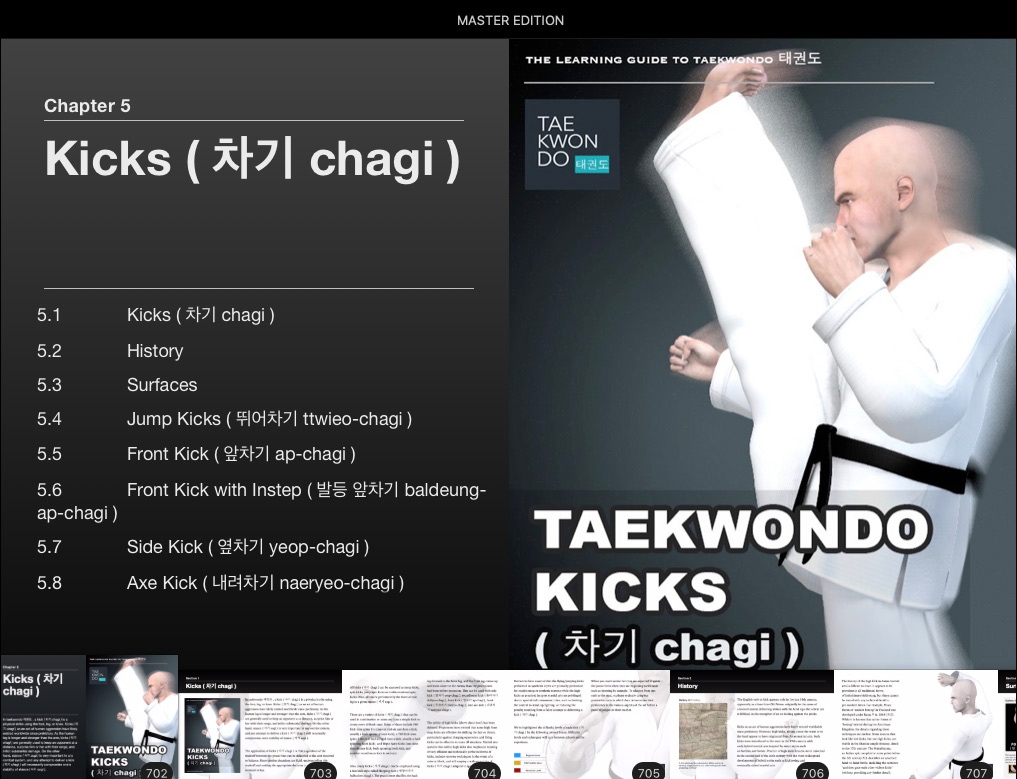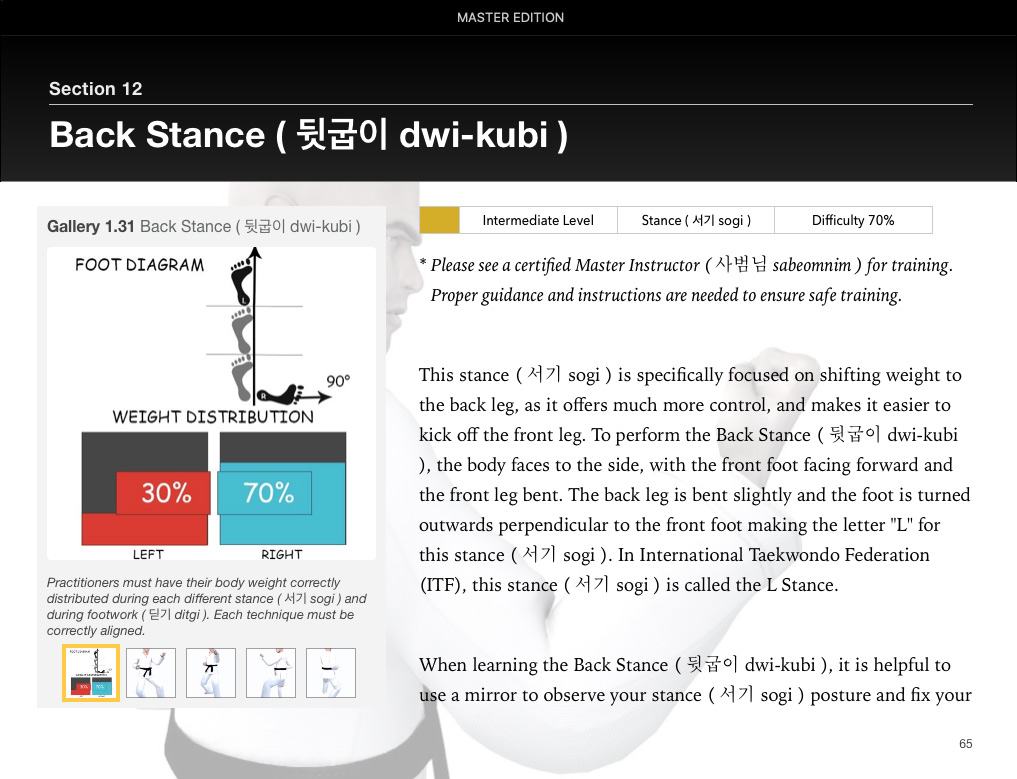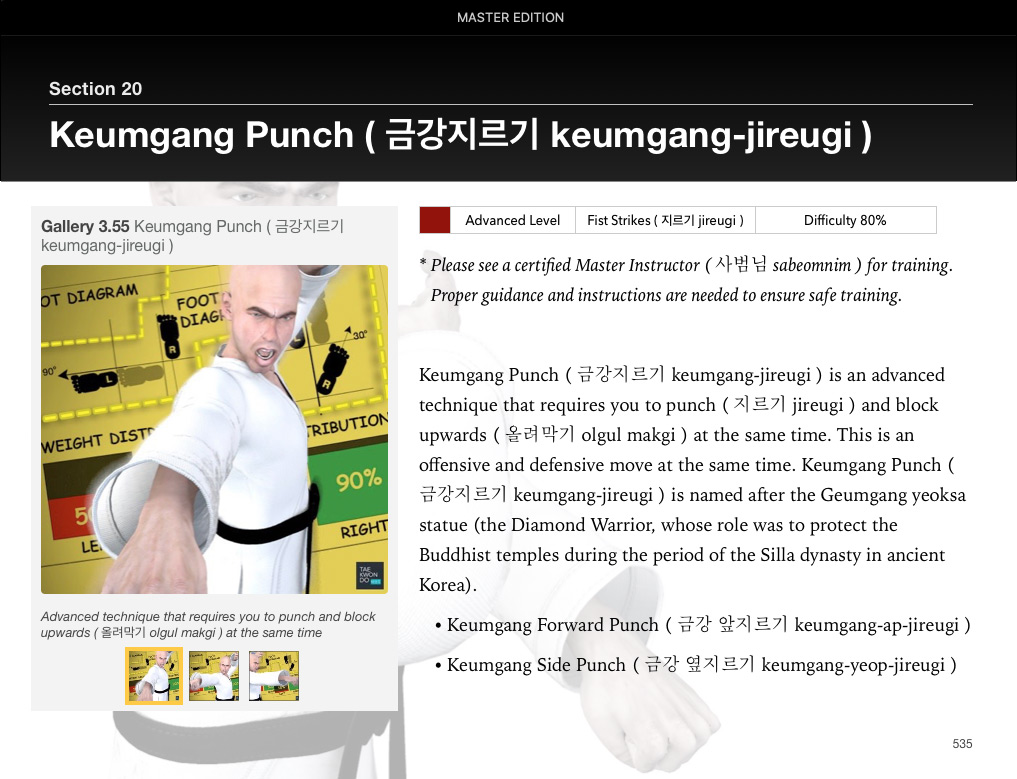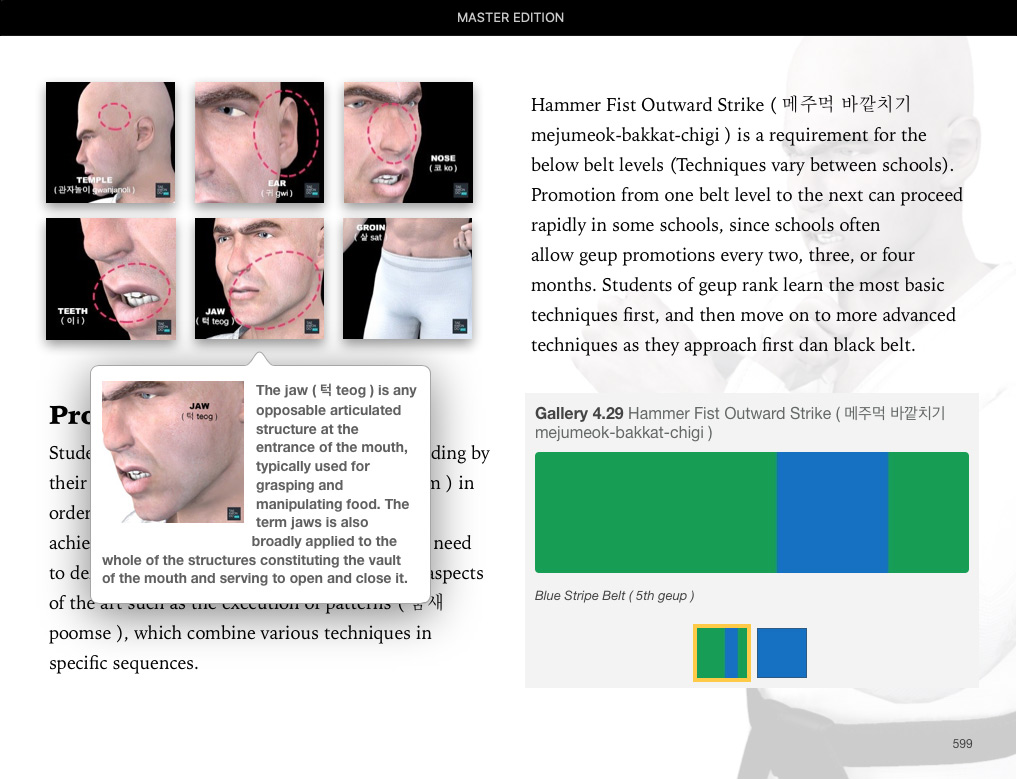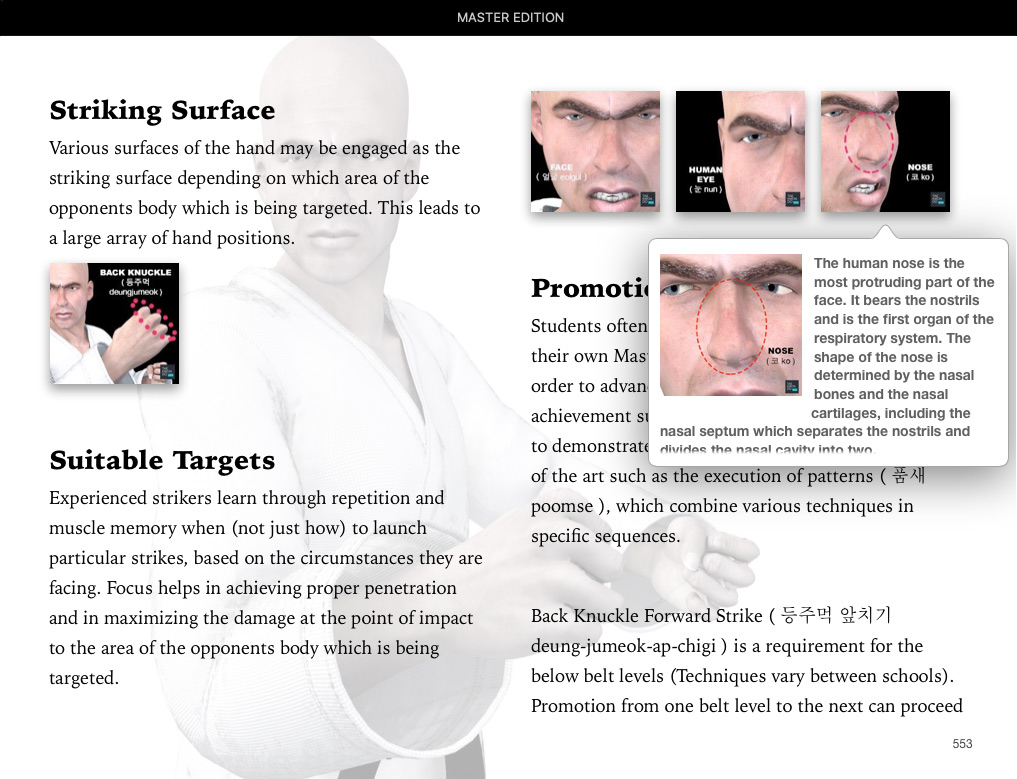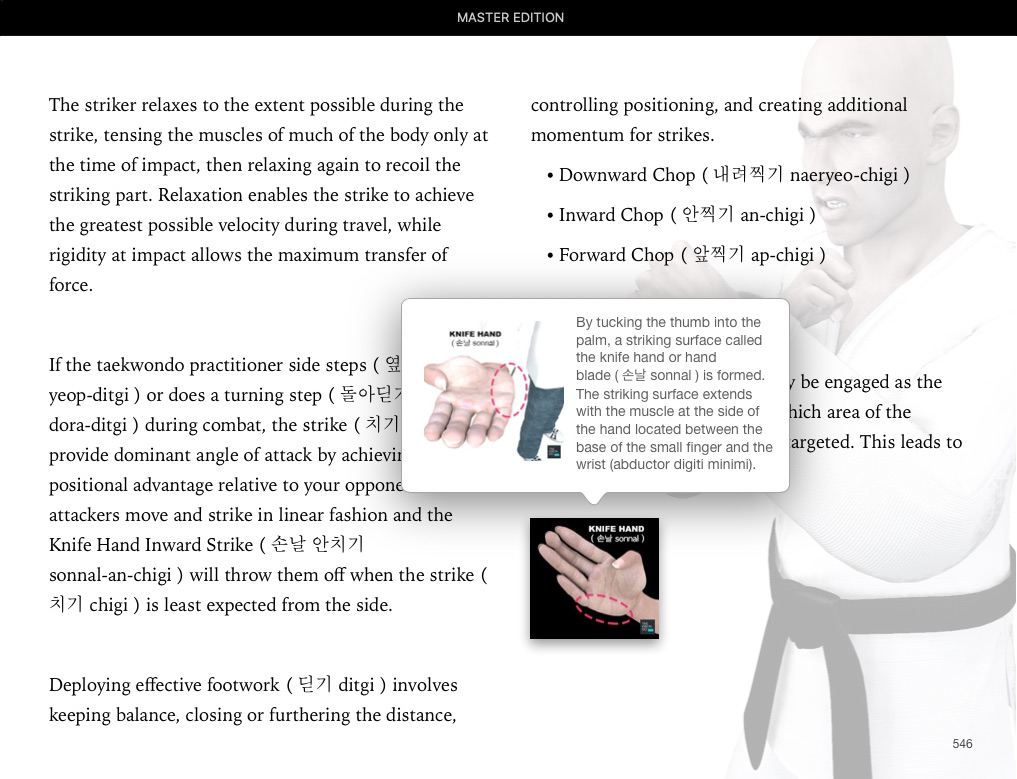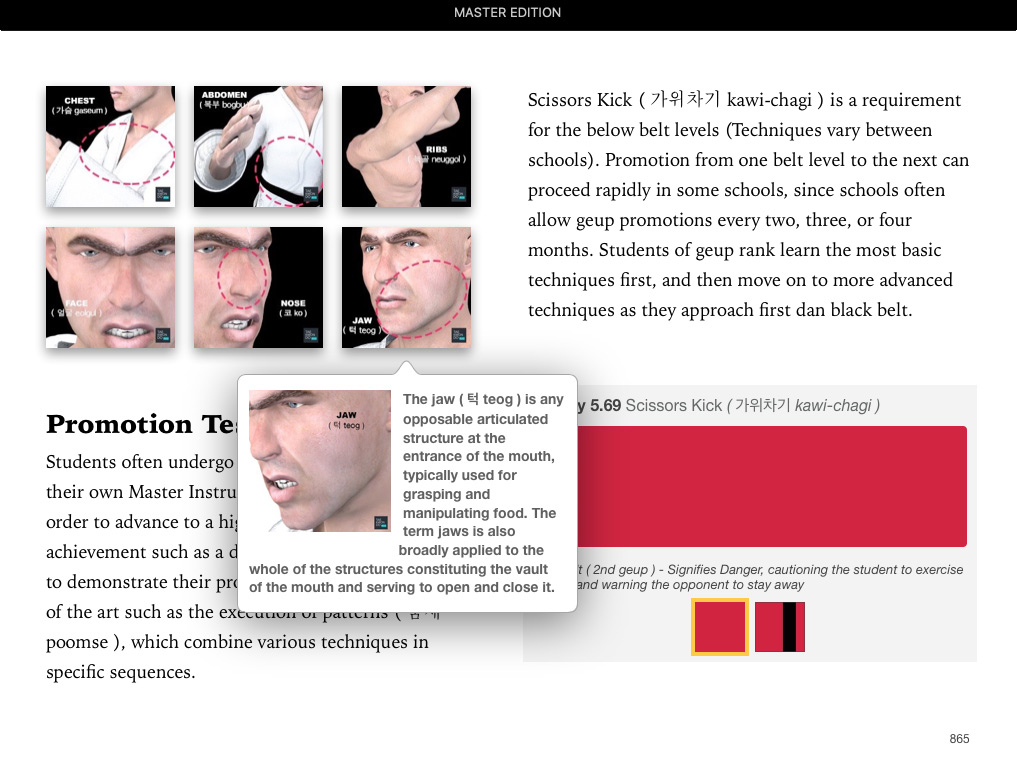Taekwondo 태권도Taekwondo Preschool
When you reach senior belt you are expected to guide the junior belts when they are beginning Taekwondo such as showing by example. To advance from one rank to the next, students typically complete promotion tests in which they demonstrate their proficiency in the various aspects of the art before a panel of judges or their teacher. View Taekwondo belt levels »
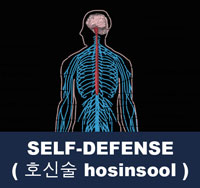
Self Defense Pressure Points
Taekwondo self-defense competition provides an opportunity for students to display their understanding of Taekwondo self-defense applications and the ability to put together their own team choreography.
A pressure point refers to an area on the human body that may produce significant pain or other effects when manipulated in a specific manner.
The concept of pressure points is present in old school Japanese martial arts; in a 1942 article in the Shin Budo magazine, Takuma Hisa asserted the existence of a tradition attributing the first development of pressure-point attacks to Shinra Saburō Minamoto no Yoshimitsu (1045–1127).
Hancock and Higashi (1905) published a book which pointed out a number of vital points in Japanese martial arts. Exaggerated accounts of pressure-point fighting appeared in Chinese Wuxia fiction and became known by the name of Dim Mak, or "Death Touch", in western popular culture in the 1960s.
While it is undisputed that there are sensitive points on the human body where even comparatively weak pressure may induce significant pain or serious injury.
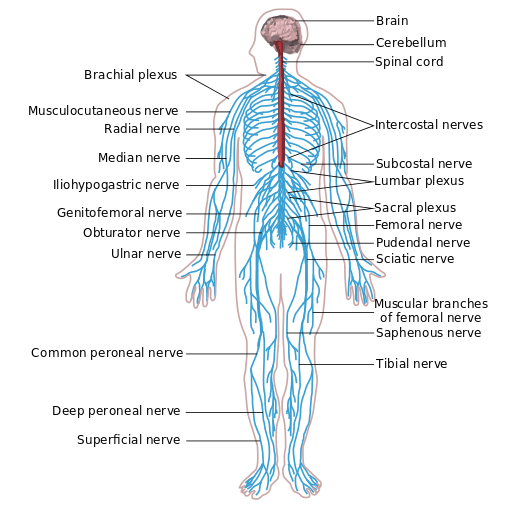
Types
There are several types of pressure points — each is applied differently and each creates a different effect. "Pain points", for example, use tendons, ligaments, and muscles; the goal is to temporarily immobilize the target, or, at the very least, to distract them. "Reflex points" produce involuntary movements, for example, causing the hand to release its grip, the knees to buckle, the target to gag, or even for the person to be knocked unconscious. Most pressure points are located on pathways on the nervous system.
Pain
Some pressure points produce pain when struck, pressed, or rubbed, depending on the point itself. These points are also referred to as nerve centers. While the distraction of pain might offer sufficient advantage in a fight or escape, the body has a pain withdrawal reflex, whereby it reacts to pain by moving away from the source. Martial artists can use this reflex with minimal effort.
Blood and blood pressure
The baroreceptors in the carotid artery are pressure-sensitive, supplying the brain with information to control systemic blood pressure. Pressure against this region will send signals that indicate that blood pressure is too high, leading to a lowering of blood pressure.
Break
There are certain areas that are likely to lead to a break if struck effectively, such as the "floating ribs", the philtrum, and the side of the knee.
Hyper-Extension
There are joints that, when struck, can be hyper-extended and even tear. The striking of these joints can permanently damage one's opponent as well as cause shock damage. There are two types, as follows:
- Brute force takes advantage of the vulnerability of the strike point, usually a joint, thereby causing damage.
- Golgi organ strike, a relatively gentle strike to the Golgi tendon at the back of the elbow, which triggers a reflex that immediately relaxes the tendon, allowing the elbow to bend more easily in the wrong direction. If this is directly followed by a solid strike to the elbow joint, the elbow can be broken with significantly less effort than it could through brute force.
Concussion
The brain is a sensitive organ which floats in cerebrospinal fluid. The fluid is a safety mechanism that allows the head to take substantial impact without resulting in concussion, although such an impact could still cause permanent brain damage. However, it is possible to deliver a blow using artful techniques so that even these protections can be effectively eliminated, causing disorientation or instantaneous knockout. The most commonly taught technique involves a strike just below the occipital ridge, at the correct angle, in the correct direction. Another well-known point with this effect is the chin or lower jaw, giving rise to the boxing expression a "glass jaw".
* Please see a certified Master Instructor ( 사범님 sabeomnim ) for training. Proper guidance and instructions are needed to ensure safe training.
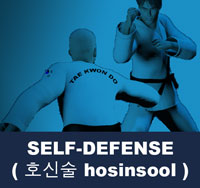
Related Articles
Self-Defense ( 호신술 hosinsool ) is to protect yourself from being attacked from would-be aggressors. It is a countermeasure that involves defending the health and well-being of oneself from harm and is designed primarily to cause injury or quickly incapacitate an attacker, in addition to being a deterrent against them. Attackers are typically larger, stronger, and are often armed or have an accomplice. With proper execution attackers may be incapacitated with a single blow, which lessens the number of attacks with multiple people. View Self-Defense ( 호신술 hosinsool ) »
Risk of injury can be reduced by completing an effective warm up consisting of a heart raiser to get your pulse up, followed by sport specific dynamic stretches (stretches whilst moving). Please follow the guidance of a certified Master Instructor or trainer when doing sports related activities. Depending on the intensity of the exercise, cooling down can involve a slow jog or walk, or with lower intensities, stretching can be used. Cooling down allows the heart rate to return to its resting rate. View more information on Warming Up and Cooling Down ».
This article uses material from the Wikipedia articles "Warming Up" and "Cooling Down", which is released under the Creative Commons Attribution-Share-Alike License 3.0.
RESOURCES
This article uses material from the Wikipedia article "Pressure Point", which is released under the Creative Commons Attribution-Share-Alike License 3.0.




